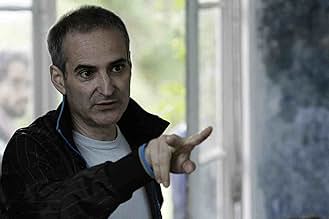Olivier Assayas's film 'Something in the Air' is an affectionate, although not uncritical, look at the lives of young French radicals after 1968. Watching it, you get an interesting sense of an era when students were interested in something other than building their careers (although the protagonists don't all completely abandon their bourgeois dreams); there's also the contrast between their profound political beliefs, and the feeling that their beloved freedom is basically the freedom of being young and moneyed - the revolution as a gap year, so to speak. The way that a life spent chasing experience ultimately does not build the foundation of lasting relationships is also well-conveyed. Overall, the cast are a little too beautiful - who wouldn't be a revolutionary when the benefits were so obvious? - and if the film has a serious weak-point, it's in not fully explaining quite why youth was drawn to the counter-culture except in a vague, spirit-of-the-age type way. A final quibble - the English translation of the French title (Apres Mai) is an awful one, better befitting a light romantic comedy.















